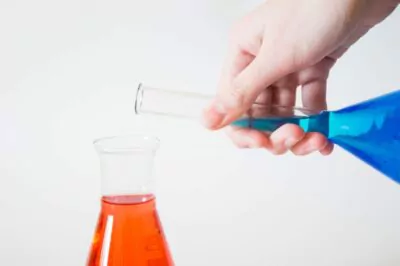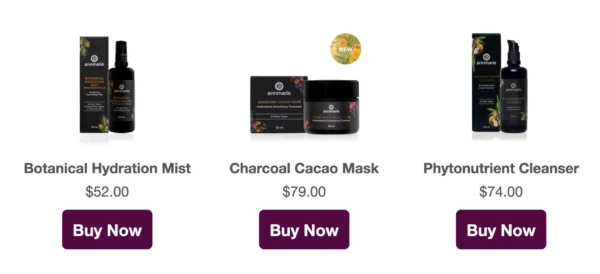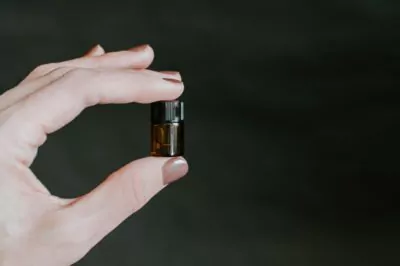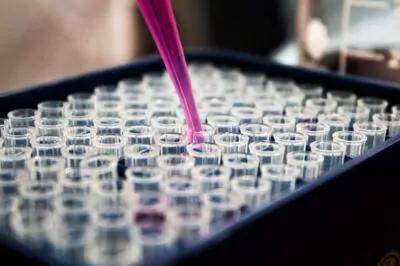You’ve probably heard about all the hidden chemicals and health risks surrounding so many of the beauty and skin care products on the market, but what exactly are they and will you ever be able to put on your lotion or eye cream again in peace — without wondering if you’re poisoning your body with toxic skin care products?
The answer is yes!
The key to healthy beauty care is to understand what’s really underneath the lid. While that may seem like a lot of work, you just have to know what to keep your eyes open for. And once you know what to look for, you can add yourself among the rapidly growing group of empowered consumers who are asking questions and being justifiably snobby about their product choices.
To help you in this mission to makeover your personal stock of cosmetics, we’ve put together a list of 10 ingredients you should avoid in anything you buy. By steering clear of these nasties, you can rest assured that whatever you’re putting on your skin isn’t harming it.
1. Parabens
Parabens are unquestionably the most commonly used preservatives in the cosmetics industry. They’re in just about any cream you might use, as they prevent mold, fungus and parasites from sprouting and growing in your products. The problem is that they can be absorbed through the skin, and have often been found in breast cancer tumors! All signs point to toxic skin care products being the cause.
Because of this, there is a growing concern that excessive use of parabens may give rise to breast cancer in women and testicular cancer in men. Although there haven’t been any conclusive studies proving this, it should be enough to make you concerned. In fact, it’s why there are so many “paraben-free” items popping up in the supermarket and pharmacies around the country.
Parabens can appear in different forms, so here’s what you want to look out for:
- benzylparaben
- butyiparaben
- propylparaben
- methylparaben
- ethylparaben
- isobutylparaben
Build Your Perfect Skin Care Regimen
Take Quiz2. Phthalates
This hard to pronounce class of substances is found in just about everything, even you. A study done by the US Centers for Disease Control found a trace of it in every single person they analyzed. This is problematic because phthalates– which are used in cosmetics and also in many plastic objects – have been found to act as a hormone disruptor linked to reproductive defects, insulin resistance and developmental problems in children.
Here’s the tricky part: phthalates usually aren’t listed on the label of your favored products, so you have to do a bit of sleuthing to determine their presence. Want a hint? They’re often found in anything that misleadingly lists “fragrance” as an ingredient. Stick to products that are scented with essential oils instead.
3. Benzoyl Peroxide
Over the last decade, the popularity of pimple-zapping products has skyrocketed. Benzoyl peroxide is responsible for this, but you should be wary about using it. That’s because it’s been linked with the promotion of tumor growth. Horrifying, don’t you think?
Beyond that, it produces toxic effects in the body simply through inhalation, and is a known skin, eye and respiratory irritant. As if that isn’t bad enough, it’s extremely toxic if you swallow it. Awful!
4. Triclosan
Technically a pesticide – at least according to the Environmental Protection Agency – Triclosan is a popular ingredient in just about any product claiming antibacterial properties. It works very well at killing bacteria, and that’s actually the problem. Not all bacteria are bad for you, and furthermore, some experts speculate widespread of this chemical could give rise to “superbugs” – harmful bacteria resistant to antibiotics.
That’s not all; triclosan has been shown to work as both a hormone and thyroid disruptor. On top of that, it’s terrible for the environment. So put your inner germaphobe at ease and know that water and natural hand soap will more than handle your daily hand-washing needs.
5. Resorcinol
Why is it that Resorcinol – a popular ingredient in bleaches – is restricted in federal government buildings, but is used freely in so many hair color products? That probably doesn’t sound right to you, and that’s because it isn’t. Not at all!
Resorcinol is a known skin irritant that has been shown in studies to disrupt healthy thyroid function in animals. It’s also a common cause of dye allergy that so many women find themselves bothered by. You don’t want this in your hair, or anywhere for that matter!
6. Hydroquinone
As a skin lightener that reduces dark blemishes caused by everything from medical reactions to bruising, hydroquinone sounds too good to be true. You guessed it… that’s because it is.
Hydroquinone reduces the melanin in your skin to get rid of those unsightly marks, but in doing so, it hurts your skin in many ways. First of all, it’s permanently altering your pigment while also weakening the elastin and collagen in your problem area – the very things that are key to keeping your skin firm and youthful! Some people get unsightly blotches after using hydroquinone, and far more get contact dermatitis or have allergic reactions after regular use. Considering how easily it irritates your skin, it’s a wonder that it’s used at all. Finally, like so many ingredients on this list, there is some suspicion that it’s a carcinogen. The results aren’t worth the harm it causes.
7. Petroleum
Here’s a sneaky one. Petroleum pops up in so many cosmetics products, it’s ridiculous. And in case you’re wondering, yes, it’s the very same substance from which your motor oil is made.
It hides behind many names that you should familiarize yourself with. They are:
- Petrolatum
- Xylene
- Toluene
- Mineral oil
- Liquid paraffin
As an industry standard, there’s a lot of information out there touting the safety of petroleum by-products, so you might be wondering why you should avoid it. It’s because it contains 1,4-Dioxane, which has been listed by the World Health Organization and the Environmental Protection Agency as a probable carcinogen. Cancer from your moisturizer? No thank you.
8. Methylisothiazolinone
Just the name alone is intimidating. Thankfully known as MIT for short, methylisothiazolinone is an increasingly common antibacterial preservative in everything from baby shampoo to moisturizer. Unfortunately, studies have shown that it contains neurotoxic properties that should be of great concern to all consumers.
In studies with rats, a mere 10 minutes of exposure to MIT was enough to cause brain cell damage. Further studies concluded that low concentrations of MIT during neural development increased the risk of seizures and visual abnormalities. Furthermore, the Environmental Working Group has classified it as a skin sensitizer and irritant.
The argument often made by toxic skin care companies is that MIT is used in very small concentrations, usually in products that are meant to be rinsed off, thus reducing your exposure to the chemical. Considering the seriousness of its side effects, it’s probably best that you limit your exposure to it completely, wouldn’t you agree?
9. Oxybenzone
Oxybenzone is an active ingredient in quite a few of the sunscreen products on the shelves of your favorite store. Unfortunately, this chemical has been linked to skin irritation and allergies, hormone disruption and low birth weights in baby girls.
What’s scary is that a study conducted by the U.S. Centers for Disease Control found that oxybenzone is present in the urine of 97% of Americans. How much of it have we been exposed to? How is it affecting us in ways that we don’t quite understand yet? With figures like these, chances are it’s already in your system, so you want to limit your future exposure to it as much as possible.
10. Artificial Dyes and Synthetic Colors
Whether you’re donning a shocking hot pink lipstick, a classic rouge to make those cheekbones pop, or rebellious black nail polish, if your favorite cosmetics are conventional, chances are they are just as dangerous as they are fabulous.
Many of the products you have are likely made with synthetic colors that are made from coal tar. Though pretty, these harsh artificial colors have been shown in studies to be carcinogenic and are likely to cause skin sensitivity and irritation due to the heavy metals they deposit on your skin when you use them. You don’t want that, so if you have any products that were made with synthetic colors, toss them in the bin! Don’t buy any more! Thankfully, it’s pretty simple to determine if that color in your favorite lipstick is real or not: just check the ingredients, and if you see anything listed beginning with FD&C or D&C, you know it isn’t what you really want.
So the next time one of those perfumed lab-coats at the mall pulls you aside to offer you a sample of Company X’s new Luxuriously Lovely Lip Enhancer, tell her thanks but no thanks, and proceed either online or to your nearest organic grocery for superior alternatives. You’ll be amazed at how much is out there!
Of course, you can always give us a try too… shop here!









thanks a lot for this piece of information. it’s very helpful.
my face has this little dot things so can I use the products I mention ( I have two comments that, where I mentioned the products) THANK YOU
what can a 12yr old put on her textured skin? I don’t have pimple or anything its just not soft
can I use cetaphil gentle cleanser and simple facial wash and st. ives and , nivea soft cream?
I know I have many questions but can you guys answer it thank you
Wait, so my big fat of Palmer’s cocoa butter formula it’s worthless now? Here I thought I was doing the right thing. Do you reconvene any cocoa butter products?
what type of element does the cocoa butter have that is dangerous? I’m using cocoa butter too.
I think that instead of worrying about whether or not a product has a chemical we should be instead asking about how much of it a product contains. all chemicals have the potential to be hazardous . It is the amount that determines whether or not they will cause poisonous effects. Poisoning, then, is caused not just by exposure to a particular chemical, but by exposure to too much of it.
Here in the Pacific Northwest, the Orca whales are not doing well and one of the tv stations provided a link to website with info on how we can help the health of Puget Sound waters and it’s marine life. One recommendation was to use products like dish and laundry soaps containing the “Safer Choice” label. I looked at the ingredient list of the laundry soap we use – one with the Safer Choice label, and it contains methylisothiazolinane! I fear my research will take over a good amount of my life now. Vigilance!
I think this article inspires neurosis. I also think that when you are referencing a scientific study that you should include specific details or at the very least the source of your information. I doubt this comment will be published but I hope someone in your organization is ashamed for spreading fear to all of your readers and customers.
Thank you for your feedback, Alex.
We do our best to cite our references, it looks like they may have gotten removed during our recent FDA compliance maneuver.
Help! I just read where it stared peroxide is toxic… the problem isn’t that i’ve overused it on my skin, I understand your not a physician, but ANY advice would help. I took a HUGE swig of peroxide & swallowed it (watching TV & not looking I grabbed it instead of my big water bottle)…My Dad made me go to the ER where I feel that dud more damage because on the way there I called ☠ Control & they said immediately drink plenty of water, well the ER room had me lay in a bed with NO water, they had to have a staff member find out what to do…45 mins went by then I got water. Do you think I damaged my organs???
Hi Coral,
Unfortunately, we’re not able to help you out here. We would suggest speaking with your physician soon though and working with a holistic practitioner to find a diet and supplement routine that could be helpful for you.
What preservatives do you use then? Gosh, it seems nothing is safe to use. “Grapefruit seed extract” is actually benzene aka sodium benzoate. There’s also ammonia involved in the process. Sodium benzoate is prolific in alternative skin care ingredients and supposedly “safer” than parabens. Nope. Basically the same thing, marketed as the natural sounding GSE!
I wish more companies used water soluable rosemary, thyme, and other herbs to preserve their products. It has to be water soluable, however, otherwise it won’t dissolve throughout the product, thus rendering its preservative capabilities useless…or haphazard at best.
Sigh…The search continues!
I have been supplying my wife skin care products and therefore I want to ask about the products I give her, Australian Brand: “KuuSh & iRaw” I’m told they’re natural and with evil chemical. But it would be nice to have an another persons view.
David Frick
Oopps, I meant to write WITHOUT ANYEVIL CHEMICALS.
All I’ve read and heard is they are as pure as you can possibly get on this planet
Hi David,
Thanks for your question. I’m not so sure about Kuush because I’m not able to find their ingredients (a red flag for sure). I would suggest doing a bit of investigation to find out their ingredients and see if they’re using any chemicals that you wouldn’t want on your skin.
Will it make a difference to use product made with organic ingredients since the water that we use also contain pesticide, fllouride, and other harmful chemicals? As far as I know, those chemicals do penetrate the skin during shower. And we rinse the mouth with it too.
Hi Meme,
Great question, we do think that every little bit you can do counts! If you’re concerned about the chemicals in your water, there are a lot of inexpensive options to filter the various water stations in your home.
If the ingredients that you listed are so bad, why do products still contain those harmful chemicals. Shouldn’t it be removed? Are those people who made the products not concern of human’s health? Isn’t it a moral issue for them to use harmful chemicals in water , food , and products?
Hi there,
Although you have a good point when it comes to working with products made with organic ingredients when the water you’re using has chemicals, we certainly believe that every little thing matters and that using skin care made with organic ingredients is still the best way to go.
Can you use Sun Love as your moisturizer and sunscreen? I like just 1 step instead of 2. Thanks
What is the best brand of make-up to use?
What brand of Make-up is the best to use?
There are some serious side effects of above mentioned toxins in personal products. Before using anything on your skin, ask yourself wither your skin care contain these harmful ingredients or not!
I’m not sure where you’re getting your info, but great
topic. I needrs to spend some time learning more oor understanding more.
Thanks for excellen information I was looking for this info
for my mission.
Also visit my website: skin lifting serum reviews
Thank you for your continuing education. We all need these reminders and reasons to be vigilant. Do you have any suggestions as to how to get people to listen and/or pay attention to this information. When I try to share it I can see the eyes glaze over in spite of an entertaining delivery!
The people reading your web site more than likely already have a clue. How do we reach the others that we care about and are, quite frankly, clueless?
~ Joyce
Hi Joyce 🙂
We appreciate your concern with educating and spreading awareness! The Annmarie Gianni Skin Care Team strives to be diligent with our blog posts and we love knowing that these articles are encouraging people to do their own research on important skin care topics/concerns. Social Media (facebook, twitter, tumblr) are all wonderful outlets to spread this information further! Thank you for supporting us, we really appreciate you.
Be aware that because it says “organic” doesn’t mean it is. Also know that quaternium is another term for formaldehyde which is frequently used in cosmetics especially for the eyes. Please take the time to read all labels.
WOW. Annmarie…thank you for the focus and didication you have put into your products. Life is busy and knowing I can simply order what I require from you is a gift….Labels have already been read and products are pure. Good!
Thank you Nanci for your kind feedback! We love that you referred to our line as a gift. We strive to create clean, pure, and truly skin care made with natural ingredients while educating our customers on how to read labels and do proper research on what is marketed as “natural”. Transparency is key!
I recently discovered I have an allergy to #8 – Mehylisothiazolinone. For a growing number of people, this preservative causes horrible, painful skin reactions. So, thank you for including it in this list, since most people have never heard of it, and it’s really awful even if you aren’t allergic! I’d also like to say that I’ve found this ingredient in a number of “clean” products I was using, so, thank you for creating truly chemical-free, delicious skin care options. 🙂
I was just wondering if you could recommend any safe and natural cosmetic companies.
I will just stick with buying Annmariegianni products as I know they are formulated without all this garbage in them, plus they smell great and I look forward to using her line everyday. My favorites are: citrus mint cleanser, eye cream, repair oil has significantly reduced my sun spot, the Dead Sea scrub is like a mini microdermabrasion- amazing and the purifying mud mask makes my skin glow. Enjoy your healthy products!
Thanks for supporting us, Isabella! We are thrilled to know you are enjoying all of the products!
Thank you for this list. I have a list from Kris Karr’s book and I carry it in my purse. I am quite brazen about flashing that list all around when I’m in a store. By now I have memorized many of these poisons, though, and can spot them immediately. I so thankful your company exists so I can buy without getting out a magnifying glass to read the fine print! I will add this list to the back of the one I have and keep on flashing!
This was a well researched and well written piece. I love these useful pieces for proselitizing! Thank you.
Thank You for this information! The problem is to remember all these names,,, choosing organic is the best option. I can see that:)
Very interesting article. Lots of good information. Unfortunately many of us don’t have time to look for all these ingredients when shopping for skin care. It seems like they are coming out with more organic items at the grocery store, but I am still wary of them.
Thank you. What do you recommend in place of these products, especially sunscreen?
Thank you for your time and work it took to put this list together. This is really good. Thanks for sharing. I’ll be keeping it handy for quick reference.
Thank you so much for this list! I started cleaning out the drawers in my bathroom just this past weekend, and have a pile of creams, etc. that I wanted to check for toxic ingredients, but didn’t know what those ingredients are. This is perfect timing!
Thanks a lot for this very informative and helpful article!
You didn’t include formaldehyde and formaldehyde releasers that are so prevalently used as preservatives. Those things make me look like someone blowtorched my face. Am I in a very small minority or the ones you list even worse than the formaldehyde releasers?